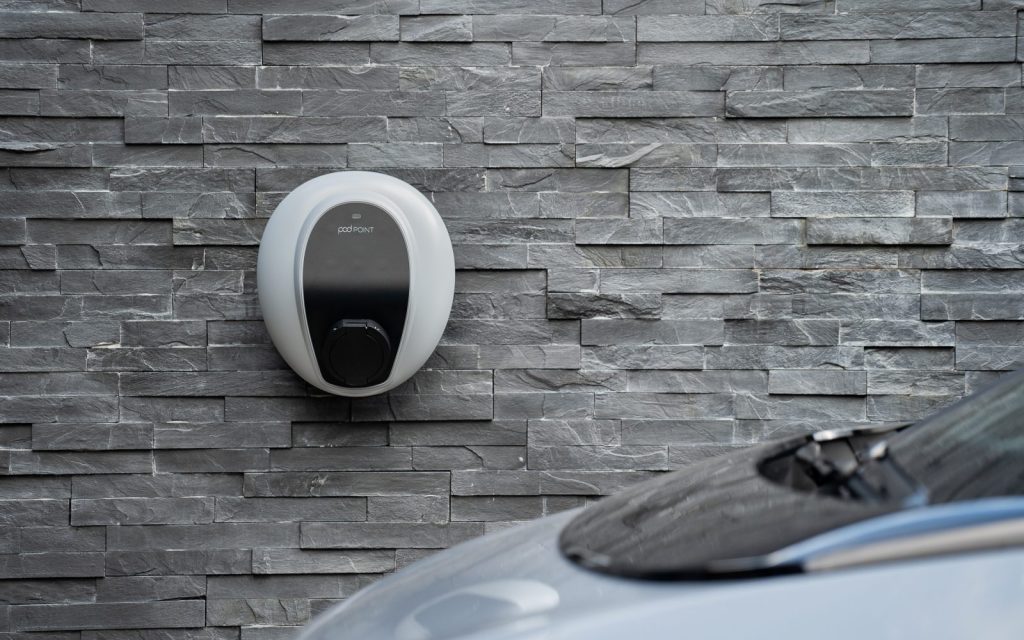If you’re thinking about making the switch to an electric vehicle, you might have some questions about range, charging, or just general queries about how EVs work. We’re here to give you some charging tips and discuss those seemingly confusing chargers and connector- we promise it isn’t as complicated as it sounds.
Tips & useful facts
Just like EVs are perfectly safe to drive in the rain, they are also just as safe to charge in the same conditions. We know it seems like exposing the connector to water is unsafe, but electric cars have a multitude of safety measures to prevent electric shocks. Charging only begins when a safe connection between the charger and the car is detected; if anything intervenes, the flow of electricity is interrupted to protect both the vehicle and the driver handling the charger, so don’t worry if you ever need to charge your car in the rain. You can read more about EV myths here.

Although batteries are made to last over 10 years, you still want to try and preserve their life and efficiency- this way, you won’t have to change the battery often, saving money in the process as well. But how do you make a battery last longer?
There are two things you can easily do to prevent significantly reducing your EV battery’s life. Firstly, try to avoid ultra-fast and rapid chargers. We know nobody really wants to hear this, but frequently charging your EV with a rapid charger can deteriorate the battery over time, shortening its lifespan and making it less efficient as it ages. Batteries operate at an optimal temperature, not too cold and not too hot, and fast chargers generate more heat than slower ones- regular exposure to this can shorten the battery’s lifespan. Of course, we aren’t saying never use rapid chargers, but if you have the option to charge at home or with a slower charger, it is worth choosing the latter.
Secondly, when charging your EV, try not to leave it on charge until it reaches 100% (or let it drain completely before charging) as repeated exposure to this puts the battery under stress, shortening its lifespan. Luckily, many EVs have battery management systems that slow down or even stop the charging process when the battery reaches a certain percentage; alternatively, you can monitor how long it takes for yours to charge to around 80% and set a reminder on your phone to take it off charge. Ideally, your battery should stay between 30% and 80%.
Charging
When it comes to different types of chargers and connectors, it may seem like an overload of information when you first get introduced to the EV world. Terms like “CCS connector” may sound confusing, so let’s break this all down.
Types of chargers
Chargers run at different speeds, depending on their power output. Slower chargers use alternating current (AC), whereas faster ones utilise direct current (DC) and can charge a car in under an hour.
Domestic 3-pin plug charger: 2.3kW (slow)
This plugs into you regular plug socket and is the slowest way of charging, with only 8 miles of range added per hour. But keep in mind that there might be weak spots in your home electricity circuits, so using this method frequently can put a strain on the circuit.
Wall box: 7kW or 22kW (fast)
Charging from a wall box adds around 30 miles of range per hour, so it takes up to 10 hours on average to charge a car this way- even better that it can be done overnight so your car will be ready to use the next day
Public: 50kW (rapid) – 350kW (ultra-rapid)
Public charging stations offer much faster charging than a wall box, from 50kW to 350kW (although these are quite rare). When using these, make sure you know what charger is best for your car, as not all EVs can handle the ultra-rapid chargers.

Types of connectors
Connectors plug into the charging station/wall box to connect the car to the power source and charge the battery. The end that plugs into the charging station is a universal type 2 connector (see Figure 1 for types of connectors), but the end that connects to the vehicle can vary depending on the make and model of the car.
Slower AC chargers come with a Type 1 or Type 2 connector. Type 1 connectors are less common now but can still be found in older models such as the Nissan Leaf and Kia Soul. Type 2 connectors have now become the most common for AC charging.
DC charging (rapid and ultra-rapid chargers) requires a different type of connector, often a combined charging system (CCS) or CHAdeMO. A CCS connector has both AC and DC current and is more common in Europe and the US, whereas CHAdeMO is preferred by Japanese and Korean manufacturers.
Additionally, Tesla only has one type of connector but, of course, they only work on Tesla cars and Tesla superchargers.
If you’ve ever wondered how EV charging works, best charging practices, and what the different chargers and connector types mean, we hope we’ve cleared this up for you. Now that you know everything about charging, why not choose your car today?

